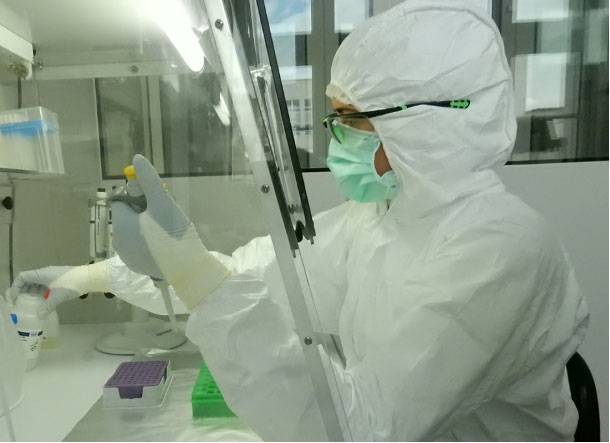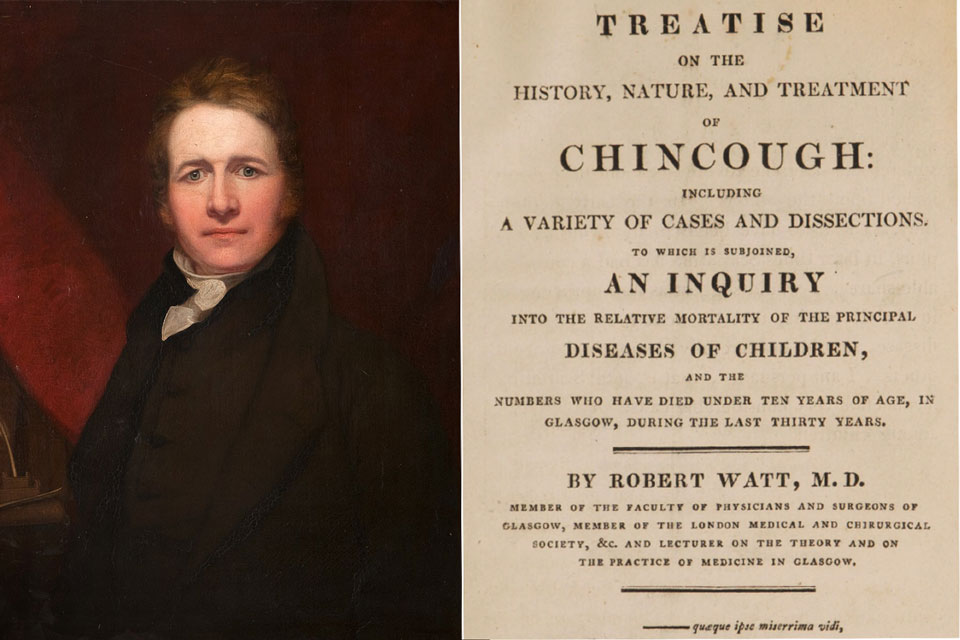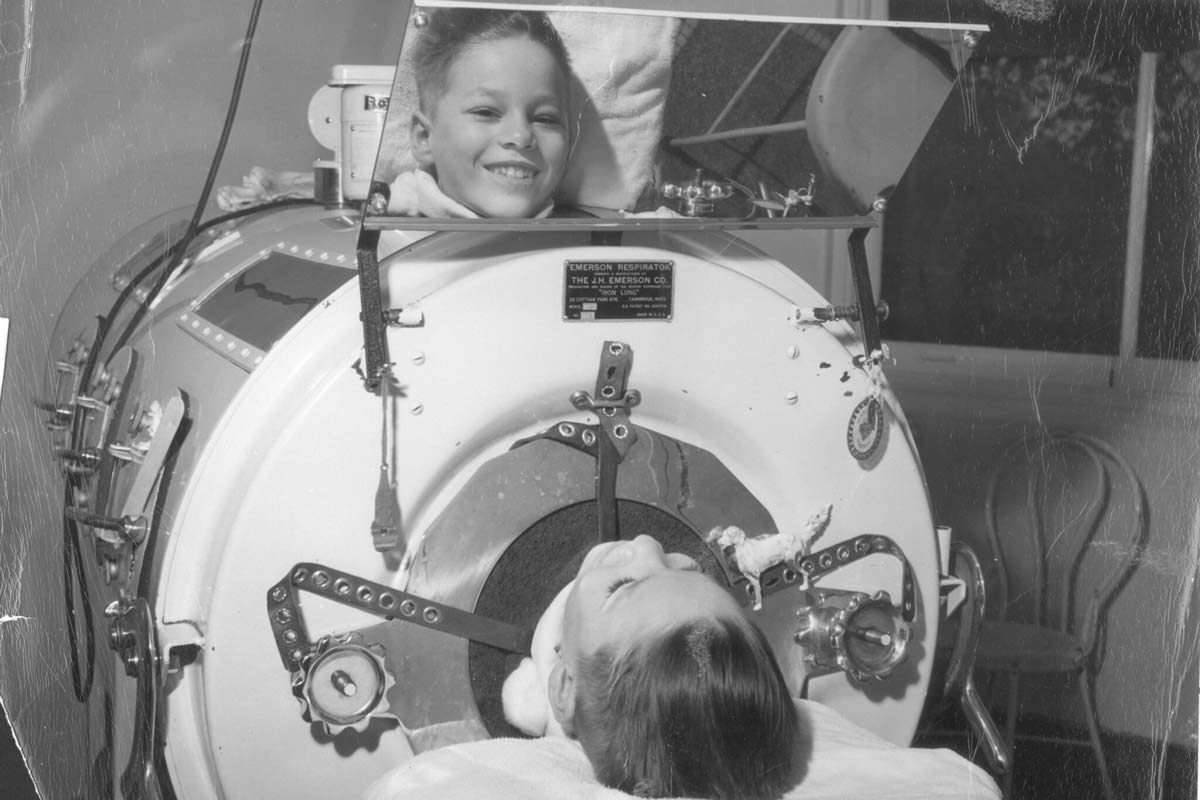Q&A: How the Black Death’s origins were cracked
A team of researchers made headlines this month with a paper that detailed a major breakthrough in the mystery of the origin of the Black Death. Here, archaeogeneticist Dr Maria Spyrou, co-lead author of that study, speaks to VaccinesWork about the discovery, and what it took to get there.
- 23 June 2022
- 11 min read
- by Maya Prabhu

Before they were excavated and removed in the 1880s, the medieval cemeteries of Kara-Djigach and Burana in the north of modern Kyrgyzstan were home to a striking number of tombstones dated to one of two years: 1338 and 1339. Ten of them were inscribed with a reference to “pestilence”.
Which pestilence? To some historians, the timing seemed suggestive. Could this outbreak have been the pathogenic cradle for Black Death, which devastated Europe from 1347, and indeed for the entire second plague pandemic, which surged and receded across the globe until the early 19th century? If so, then those tombstones near Lake Issyk-Kul would constitute the keys to one of the greatest puzzles of human history.
Ancient genomics allows us to really understand how the past relates to the present, from a biological standpoint
But other historians maintained it was unlikely that the deaths at Kara-Djigach were even attributable to Yersinia pestis, the causative bacterium of plague, a rodent pathogen which, even today, sometimes crosses into humans. And so, the true origins of the Black Death remained a mystery.
Until now. This month, a team of scientific and historical researchers published a breakthrough study in Nature, in which they presented ancient DNA evidence – drawn from the human remains that had once lain buried at Kara-Djigach and Burana – that the Central Asian “pestilence” really had been a Y. pestis epidemic. Moreover, the particular strain at work in that outbreak was a close ancestor of the bacteria that went pandemic just a decade later.
VaccinesWork spoke to Dr Maria Spyrou, an archaeogeneticist at the University of Tübingen and a lead author of the paper, about how this important new discovery was made – and what it really means to get a genome-level glimpse into the deep past. That conversation, edited for clarity and length, follows below.

Like most other researchers interested in the Black Death, you’ve been conscious of the existence of the gravestones in Kara-Djigach and Burana for a long time. So why this research, why now?
Well, the “why now” relates more to the time when we actually got the opportunity to do this project.
Basically every book that deals with the history of the plague discusses these very remains – discusses the epidemic that happened in Lake Issyk-Kul, the mention of a pestilence on those tombstones. Historians haven’t been able to agree on whether this outbreak was at all related to the second pandemic, and even couldn’t agree on whether it was a plague outbreak, or an epidemic of a different infectious disease.
What we found was that the strain from Central Asia was actually ancestral, directly ancestral to the genomes associated with the strains that cased the Black Death in Europe.
The use of genomics is more of a new thing in addressing these kinds of questions. But while we had been aware of the archaeological evidence for quite some time, we didn’t really know how we could access the remains [of the people who had once been buried in those graves], because it relates to a very old excavation that happened in the 19th century.
So how did you get access to those remains?
We were actually very, very lucky. This was all a project that was initiated by our collaborator, Phil Slavin, who is an historian. He did quite a lot of detective work before coming to us – and he was actually able to locate where the remains were. We got in contact with the museum that housed the remains, or parts of the remains [of the people who had been buried in the graves], that had been excavated in the 19th century, and they gave us access. We were able to access seven specimens from seven different individuals from those two cemeteries.
One of the first things that we want to pay attention to when we do this work, especially when we want to work on ancient pathogens, is to select the right specimen. The specimen we most often select for our analysis is tooth remains.
Teeth are highly vascularised during an individual’s lifetime, and therefore, by drilling or sampling the interior of these teeth, we expect to have higher chances of detecting blood-borne infections, or the DNA from blood-borne pathogens that affected an individual during their lifetime.
Can you tell me a little bit about what that lab work looked like?
You’re wearing this protective gear – not so much for protecting yourself from the sample, but rather the other way around, in order not to contaminate the sample yourself with your own DNA, because ancient DNA is preserved in really, really tiny amounts in the samples. We don’t want to contaminate the samples with our own DNA that is present in really, really high amounts everywhere on our body.
So you go into the ancient DNA lab, you sample the material, you extract DNA from the material, you build what we call “genetic libraries”, and then you use those genetic libraries for sequencing fragments of DNA that are within our samples.
The type of sequencing that we do is called high-throughput sequencing or next-generation sequencing. And it allows us to actually generate millions of fragments, even billions of fragments, from single specimens. And then we can use those DNA fragments, or DNA ‘reads’, that come out of the sequencer to actually look for bacterial or viral DNA, for pathogen DNA that may have affected these individuals.
Then we used computational techniques to match the DNA that we sequenced with a large database containing sequences from modern representatives of several thousands of microbial genomes. And once we did that, we actually got a match of our sequenced fragments against the Yersinia pestis bacterium.
Have you read?
But what you discovered was bigger than a confirmation that these 14th century people from near Lake Issyk-Kul died with plague. You arrived at a vital discovery about the genetic relationship between this plague in Central Asia, and the pandemic that killed so many millions in Europe over the course of the next several hundred years.
Yes – after we found this first indication that what was in our samples was likely fragments or traces of DNA from this ancient Yersinia pestis bacteria, we wanted to actually take these miniscule amounts of DNA from the bacteria and try to reconstruct the whole genome. Just to give you an idea of what I mean by miniscule amounts: less than 0.1% of what’s in our sample belongs to Yersinia pestis.
That means we had to use other laboratory techniques – and what we did was what we call a “hybridisation capture” technique, where we use modern DNA that is related to the DNA that we are targeting, to actually fish out the DNA of interest from our samples, and therefore make this DNA more accessible to us for analysis.
Through this, we were able to reconstruct two entire genomes from two separate individuals that suffered from plague, and died of plague, during the 1338-1339 epidemic.
And then, we could do all sorts of additional analyses – we could actually compare these to previously published genomes, both modern genetic diversity but also ancient genetic diversity from the Second Plague Pandemic.
And that was illuminating.
Exactly – what we found was that the strain from Central Asia was actually ancestral, directly ancestral to the genomes associated with the strains that cased the Black Death in Europe.
What we were dealing with was a more ancestral form of the bacterium that caused the Second Pandemic, but it also wasn’t too far away – in terms of genetic distance, but also in terms of time, right? We were only able to find a two-mutation difference between our ancient Central Asian genome and the European ones from the Black Death period. In terms of time, we knew that this genome was separated by maybe only ten years from the ones we have from Europe in the Second Pandemic.
How did the pandemic start, and why did it start? And how did the bacterium make it all the way to Europe in just the next eight years? I’m excited to see what comes in the future.
So is what you’ve found the definitive mother-bacterium for the Black Death?
We don’t actually claim to have found “Outbreak Zero”. It may be that there were other outbreaks in the preceding years – though not too far back.
What we are saying here is that the strain that we found seems to be the direct ancestor of not only the ancient genetic diversity that we find in Europe, but also of a large portion of the modern genetic diversity that we find in many parts of the world today. It’s what we call the most recent common ancestor for all of those. It’s kind of the source-strain for everything that comes after.
Whether this strain existed for a few years before is something that might be possible. But the fact that we have now a direct date for this strain – we know it was from 1338-1339 – allows us to kind of date this big diversification that we find to around the first half of the 14th century.
We’ve been studying the history of the second plague pandemic pretty much ever since the second plague pandemic. The kind of work you do, and the technology researchers like you are able to use, opens a new chapter. Can you speak to the potential of ancient DNA in this kind of research?
The ancient DNA field went through a large transformation around the beginning of the 2000s – around 2005 or so. And one of the main technological advancements that drove this change in the field is what we call the next generation sequencing technology. Now what this technology allows us to do, as I said before, is sequence millions or billions of DNA fragments in a sort of unbiased or untargeted manner from any sample we’re analysing. And that doesn’t only apply to ancient genomics – it has transformed several different fields of biology over the last years. But in particular, for ancient genomics, it really allowed us to make the step from studying genetics to studying genomics.
That hasn’t only revolutionised the field in terms of human DNA work, or pathogen DNA work, but it has allowed us to also understand a lot about genetic diversity that existed in the past, to study the history of different animals, as well as animal domestication. So it really gives us an incredible tool to access the past.
The first ancient bacterial genome that was published using this technology was done in 2011 – and that was actually a Yersinia pestis genome from victims of the Black Death in Europe. And now, of course, we have access to genetic information from several different ancient pathogens.
That doesn’t only allow us to kind of make direct inferences and really discuss about humans as entities that interact with their environment – not only studying human DNA but also studying how human diversity has been shaped, and also how we have interacted with our environment, and how we and our practices may have also been shaped by other factors as well, including infectious diseases.
But it also allows us to address historical questions – to really allow us to understand how the past relates to the present, from a biological standpoint. How past pathogen diversity relates to the diversity of the same sort of organisms that we find around the world today.
As an example: for plague – if we had not studied those ancient genomes from the second plague pandemic, not only the ones we analysed in our study, but also others that had been previously published, we would never have known that it was the Black Death that had a really important role in the birth of a really large portion of the genetic diversity of the bacterium we find around the world today.
And I think this is quite an important realisation for understanding how infectious diseases emerged, and which types of hosts are involved in their emergence, and how they disseminate among human populations.
Do you mean that the wildfire spread of the Black Death amongst humans was the occasion, or the opportunity, for the bacteria to develop into their modern forms?
[Laughs] Yeah, that is a very interesting question. And we’ve not addressed this. Especially as we work with the archaeological record that is so sparse, and so scarce. It’s something we’re still working on. So – what were the circumstances under which this major diversification happened?
Sounds like this discovery – breakthrough in an age-old mystery though it may be – is less “case closed,” more new beginning.
Absolutely. Now we’ve been able to narrow down the timing, and perhaps also the source, I think it really gives us an opportunity to study those regions in more detail to find out how did the pandemic start, and why did it start? And how did the bacterium make it all the way to Europe in just the next eight years? I’m excited to see what comes in the future.
Spyrou, M.A., Musralina, L., Gnecchi Ruscone, G.A. et al. The source of the Black Death in fourteenth-century central Eurasia. Nature (2022). https://doi.org/10.1038/s41586-022-04800-3
Interested readers can also read co-author Dr Philip Slavin’s article on this work in the Conversation









